The race to save the Reef
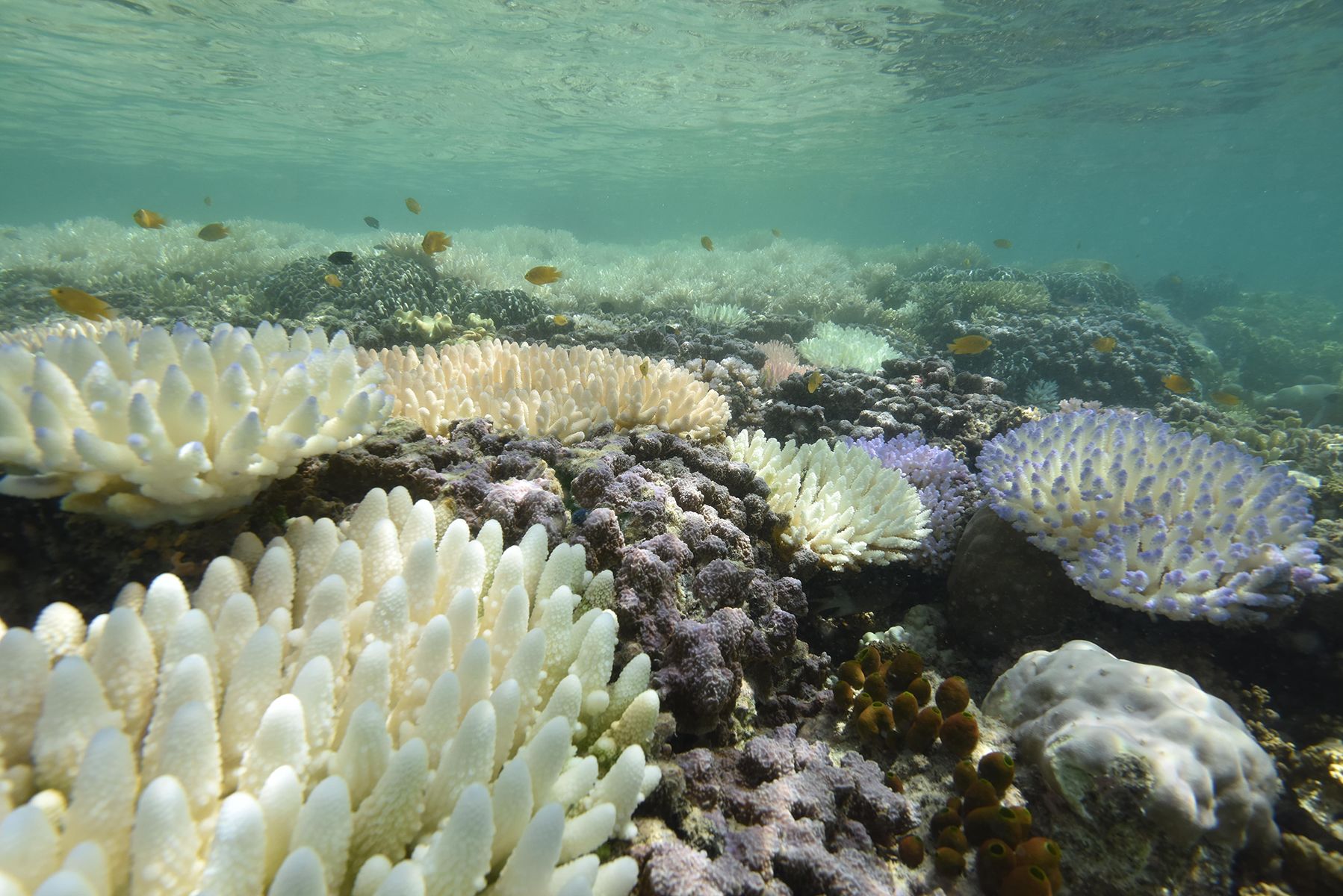
To celebrate Research Week 2018, UQ is proud to share how UQ research is creating change, right across the world, every day.
Find out how our researchers are collaborating with research partners both in Australia and abroad in the race to save the Great Barrier Reef.

The Great Barrier Reef is the world’s largest coral reef, one of the seven natural wonders of the world, and was listed as a World Heritage Site by UNESCO (The United Nations Educational, Scientific and Cultural Organization) in 1981.
It is Australia’s greatest natural wonder and one of the country’s biggest tourist attractions, worth $6.4 billion each year to our economy, but its future and very existence is under threat.
In 1998, the first global bleaching event was recorded and 16 per cent of the world’s coral was lost.
Professor Ove Hoegh-Guldberg from UQ's Global Change Institute wrote at the time about the impacts of climate change, specifically ocean acidification and rising ocean temperatures, and their contribution to the bleaching event.
Since then, around 40 per cent of the world’s coral reefs have been lost to bleaching and as a result of natural disasters.
“Mass coral bleaching events across three years have driven the loss of half the Great Barrier Reef's shallow water corals. This is on top of the loss of half the corals since the early 1980s, illustrating the perilous status of coral reefs globally," Professor Hoegh-Guldberg says.
“Given the scale of the destruction, this is an all-hands-on-deck moment.”
At UQ, researchers from across almost every discipline are working tirelessly in the race to save the Reef.
From eradicating threats and using dead and damaged coral to fast-track the Reef’s growth, to using technology like drones and geochemical techniques to better understand the challenges it faces, researchers are working with government and business partners both in Australia and abroad to tackle the myriad of factors that are threatening this very important natural wonder – before it’s too late.
Lessons from the past
In order to move forward, you often have to look back, and an international research team led by UQ scientists is helping provide historical insights into the ecological and environmental changes the Great Barrier Reef has undergone over to time to help predict how it will respond to future environmental change.
Most coral reef data only dates back to the 1980s, so researchers from UQ’s Schools of Earth Sciences and Biological Sciences, in collaboration with international partners, are using a novel approach to better understand the Reef's history.
Through the use of a purpose-built UQ research vessel, the RV D. Hill (pictured), 12 high-quality core samples were recovered from the Reef in 2015. These cores were then analysed using precise dating and geochemical techniques to develop robust baseline information.
Project co-leader Professor Gregg Webb said analysing the cores provided important insights how the Reef responded to changing sea levels and climate in the past.
"By analysing the geochemistry of corals within the cores, we can understand how ancient water quality, sea water temperature and nutrient loads governed natural reef growth before humans arrived with their own effects on the environment, such as pollution."
“We are learning how rapidly the reefs grew, and how coral communities changed over thousands of years, in response to changing climate, through to the present day.
"As well as helping us understand the Reef's recent history, the data is also helping us predict future Reef responses to environmental change."
While the cores recovered from the expedition are still being processed, the research has already provided important insights into the significant changes that have taken place on the Reef, which is helping to inform current management practices.
Read more about how UQ researchers are using the Reef's past to predict its future on UQ News.
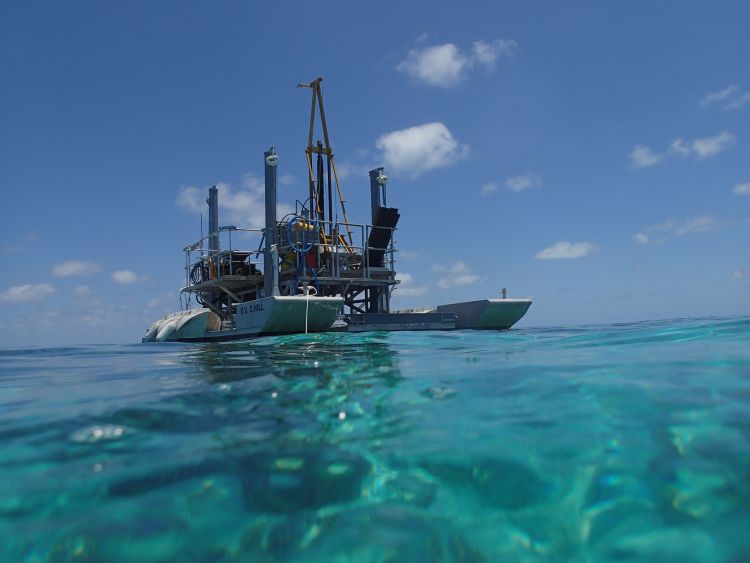
A lifetime saving the Reef
The Global Change Institute (GCI) was established at UQ in 2010 to tackle global challenges such as healthy oceans, food security, sustainable water and renewable energy.
As the inaugural Director of the GCI, Professor Ove Hoegh-Guldberg has seen UQ become the world leader in reef research and mapping, with more than 1000 kilometres of reef across 22 countries mapped and more than 600,000 images taken since 2010.
The impacts of climate change on the Great Barrier Reef, and reefs worldwide, has been Professor Hoegh-Guldberg’s life’s work.
“Coral reefs are really quite extraordinary – supporting more than a million forms of life, and ensuring the livelihood of half a billion people worldwide – but in the past 30 years, around 40 per cent of them have disappeared. Getting to know our coral reefs is important to understanding how to save them,” Professor Hoegh-Guldberg says.
One of the GCI’s greatest achievements has been linking with the XL Catlin Seaview Survey in 2012 to document the largest baseline record of the world’s coral reefs.
In collaboration with XL Catlin Seaview, UQ has been able to map reefs all over the world using a purpose-built panoramic camera system on an underwater scooter, taking 360° images at three-second intervals of up to two kilometres per dive, following the contours of the reef at a standard depth of 10 metres (+/- two metres).
“By standardising the survey depth, we create a rigorous platform by which to compare the same coral communities across multiple sites and regions – and using geographical tags we have amassed an unbiased documentation of coral reefs at particular points in time that can then be compared and contrasted later on.”
Find out more about the XL Catlin Global Reef Record and take a virtual dive on the Global Change Institute's website.
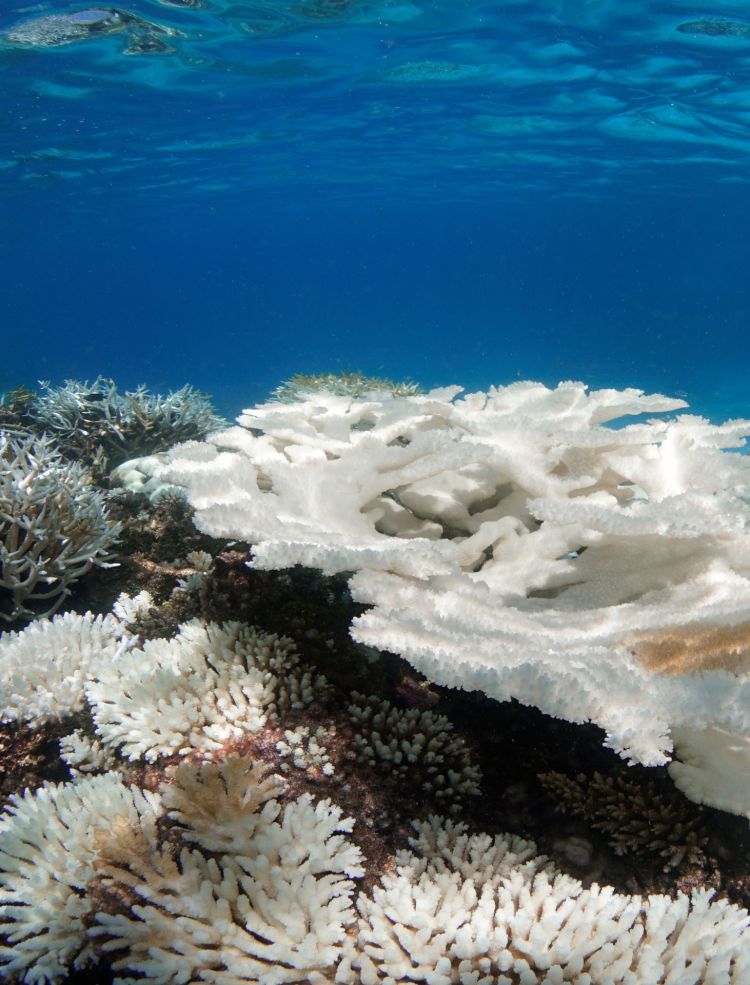
Bleached coral in 2015: XL Caitlin Seaview Survey
Bleached coral in 2015: XL Caitlin Seaview Survey
Rebirth from resilient reefs
Just three per cent of the Great Barrier Reef’s corals may hold the key to regenerating reefs damaged after major disturbances.
Researchers from The University of Queensland, CSIRO, Australian Institute of Marine Science and the University of Sheffield have pinpointed 100 reefs that have the potential to supply larvae (fertilised eggs) to almost half of the Great Barrier Reef’s ecosystem in one year.
Professor Peter Mumby from UQ’s School of Biological Sciences and ARC Centre of Excellence in Coral Reef Studies, and the newly appointed Chief Scientist of the Great Barrier Reef Foundation, says that finding these 100 reefs is a little like revealing the cardiovascular system of the Great Barrier Reef.
“They are well connected to other downstream reefs by ocean currents and can provide coral larvae, which float on ocean currents, to support the recovery of other reefs,” Professor Mumby says.
He says these reefs also appear to be less at risk of the damaging effects of bleaching and starfish predation.
UQ School of Biological Sciences Dr Karlo Hock says the presence of these well-connected reefs means the whole system of coral reefs possess a level of resilience to help it bounce back from disturbances.
“Identifying only 100 reefs with this potential across the length of the entire 2300km Great Barrier Reef emphasises the need for effective local protection of critical locations, and carbon emission reductions to support this ecosystem,” Dr Hock says.
Pictured: Professor Peter Mumby surveying a coral reef.
Read more about this exciting research on UQ News.
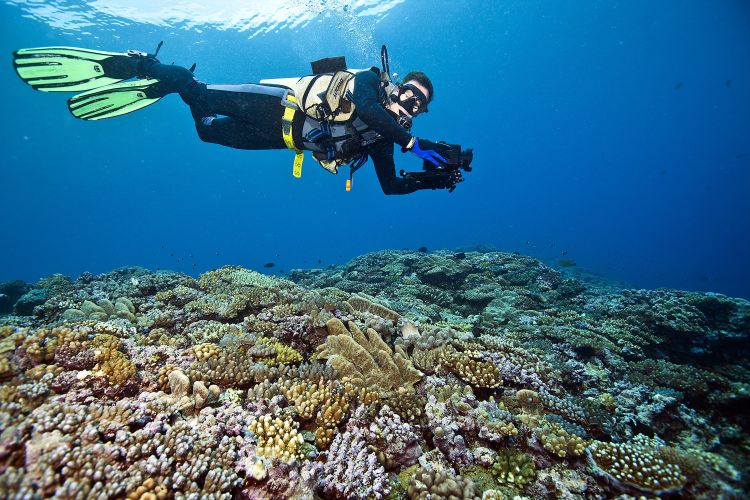
Eradicating one of the Reef’s greatest threats
Professor Bernard Degnan and Associate Professor Sandie Degnan have been studying the the Great Barrier Reef since 1987, when they began the first molecular genetic analyses on the Reef.
Together they have established a Genetics Laboratory within UQ’s Zoology Department and a Marine Genomics Laboratory within the School of Biological Sciences.
In 2013, the Degnans, in collaboration with the Australian Institute of Marine Science, began the crown-of-thorns starfish genome project, studying one of the Great Barrier Reef’s fiercest enemies.
“When crown-of-thorns starfish are in population outbreaks, they are one of the most aggressive destroyers of coral reefs in the world – and a longstanding problem for the Great Barrier Reef and across the Pacific.”
The project, which now also includes the Okinawa Institute of Science and Technology (OIST) and the University of the Sunshine Coast (USC), has discovered the genes the starfish use to communicate – information that can be used to predict when they will be in large groups for reproduction and allow for mass eradication.
“Now we’ve found the genes the starfish use to communicate, we can begin fabricating environmentally safe baits that trick them into gathering in one place,” Professor Degnan says.
“Using the genome to unlock the secrets of the biology of an animal and then using those secrets to manage the animal is a strategy that can be applied elsewhere.”
Read more about the crown-of-thorns starfish genome project on UQ Research Impact.
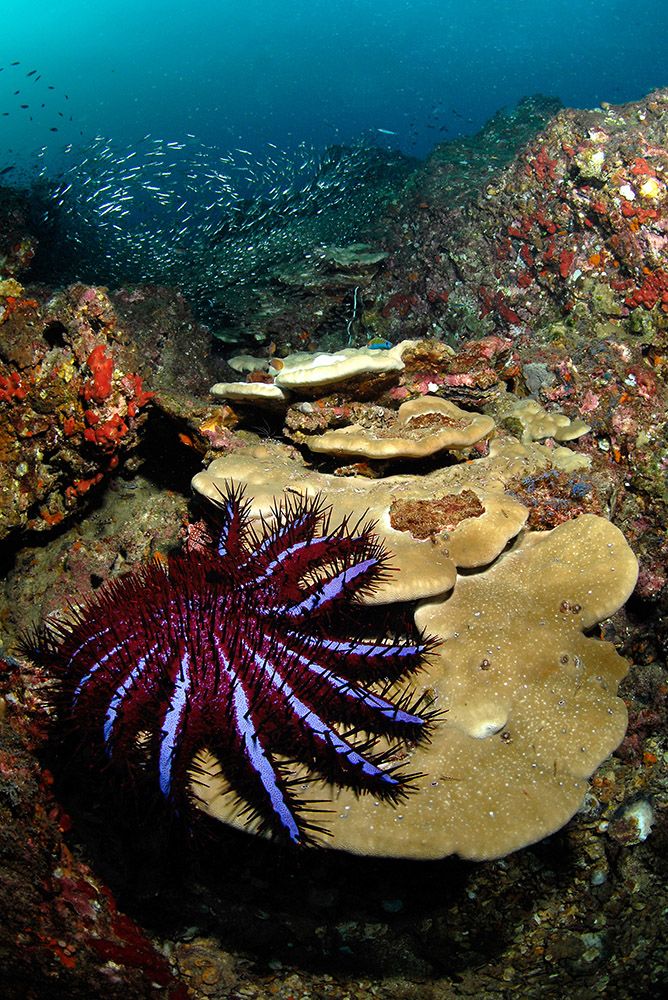
Crown of thorns starfish: Getty Images/crispyfrog
Crown of thorns starfish: Getty Images/crispyfrog
Mapping the Reef
Despite being Australia’s top tourist attraction and one of our greatest national treasures, there is no complete map of the Great Barrier Reef showing the different types of coral present along its 2300 kilometre length.
UQ Remote Sensing Research Centre directors Professor Stuart Phinn and Dr Chris Roelfsema have set out to change this, leading a global mapping and monitoring program that’s aiming to not only map the Great Barrier Reef, but coral reefs globally.
The global mapping project will contribute to improved monitoring and management activities for reef conservation and is the result of a collaboration between UQ, Paul G. Allen Philanthropies, Planet, the Carnegie Institution of Science, and the Hawaii Institute of Marine Biology.
In addition to traditional field data collection, the researchers are using satellites, drones and the documented observations of volunteer community members along with big data processing to complete this massive undertaking.
“Without these techniques and new mapping and modelling technology, it would take 400 years to map the entire Great Barrier Reef for instance and its 2900 individual coral reefs and grass beds,” Dr Roelfsema says.
The global project is currently focusing on five initial sites: Heron Island on the Great Barrier Reef, Moorea in French Polynesia, the Lighthouse Reef in Belize, the western side of Big Island of Hawaii, and Karimunjawa in Indonesia.
With continued funding, the project will expand its mapping in 2019 and encompass the entire globe by 2020.
Image credit: Getty Images/superjoseph
Read more about this international mapping partnership on UQ News.
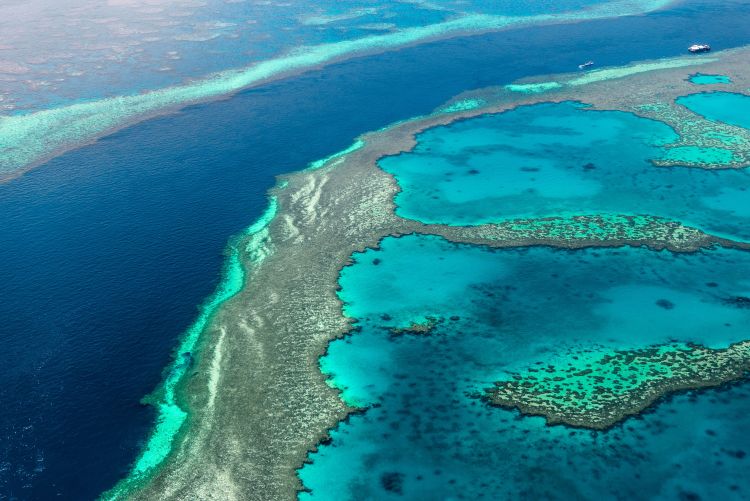
Community-based conservation
UQ is proud to be custodian of the world’s largest citizen-based coral health assessment program, with members in 137 countries, data from 79 countries and a simple-to-use system in 12 languages.
CoralWatch is based at UQ’s St Lucia campus but conducts events, workshops and classes up and down the Great Barrier Reef and in Indonesia. A public understanding of coral reef futures and climate change is the primary goal. Through a network of volunteers and ambassadors and with support from the Queensland State Government, CoralWatch provides opportunities for people around the world to act now for the future of our reefs.
Using the Coral Health Chart, a tool developed by UQ’s Professor Justin Marshall and his team, CoralWatch helps non-scientists around the globe access information and gain hands-on experience collecting scientific data about the health of corals.
The chart, used by dive centres, scientists, school groups, and tourists, standardises changes in coral colours, providing a simple way for people to quantify coral health and contribute to the CoralWatch global database. Just as important as the incoming data is an outgoing understanding of the race to save the reef.
“We developed an innovative technology that allows citizen divers to monitor coral health whenever and wherever, and report their findings back to CoralWatch via an app or the website,” Professor Marshall says.
The CoralWatch program has greatly increased the amount of information available to marine scientists as they work to save the world’s reefs, including the Great Barrier Reef.
CoralWatch also conducts regular workshops for communities, teachers and students and has developed a range of high-quality educational materials, many of which are freely available. The team has just returned from the Outback with its new set of Virtual Reality headsets, taking the reef to the desert.
“You don’t have to get to the reef to understand the problems and contribute to the solutions,” Professor Marshall notes.
Find out more about the CoralWatch program.
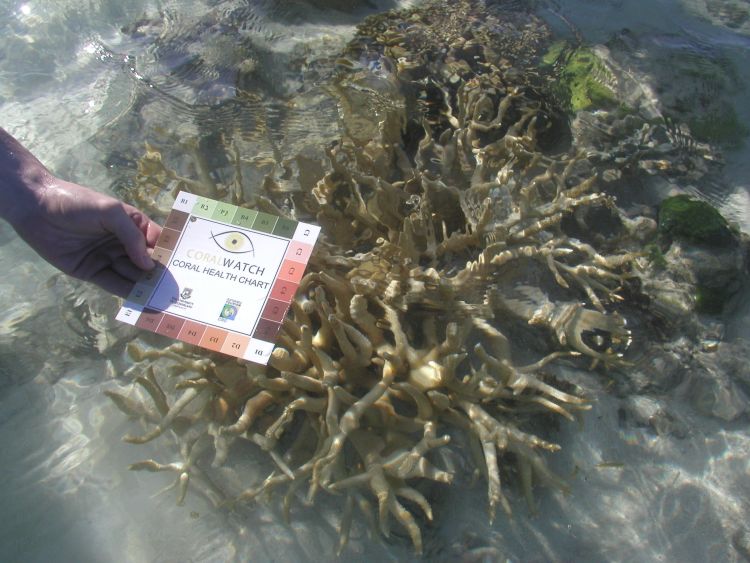
CoralWatch coral health chart
CoralWatch coral health chart
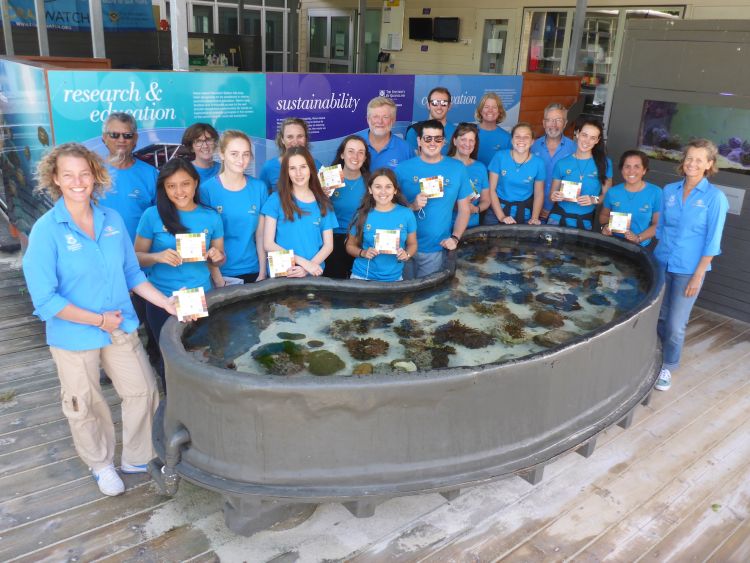
A community group using CoralWatch charts.
A community group using CoralWatch charts.
Reducing run-off for a healthier Reef
UQ researchers are working with government and business partners to develop fertilisers that decrease environmental degradation and impact on areas such as the Great Barrier Reef.
Agriculture accounts for approximately 80 per cent of land use in Reef catchment areas and is the main source of excess nutrients, fine sediments and pesticides that flow to the Reef.
These nutrients are linked to outbreaks of the destructive crown-of-thorns starfish and cause growth of algae and algal blooms – another key threat for the Reef.
A collaborative project between researchers at UQ’s Dow Centre for Sustainable Engineering Innovation and School of Agriculture and Food Sciences, together with the Queensland Government and industry partners, is using materials science and microbiology to develop cost-effective and environmentally sustainable alternatives to commercial fertilisers, which are a major contributor to the man-made nutrients found in the Reef.
These new formulas will reduce the amount of run-off that makes its ways to our streams and oceans, helping protect the Reef from further harm.
Agriculture and Food Sciences researcher Professor Susanne Schmidt says while farmers are aware of the need to reduce nutrients in soil, progress has been slow as there haven't been many options when it comes to fertilisers.
"Commercial fertilisers are mostly highly soluble and therefore easily lost from soil in wet tropical environments," Professor Schmidt says.
"Alternative commercial fertilisers currently available – which are either plastic-coated or have additional toxins to slow bacterial conversion – don't always deliver on the promise of reducing pollution and may actually create their own problems.
"There is no doubt that innovation in fertiliser design is needed, and this interdisciplinary collaboration between materials science engineers and agriculture and ecology experts is breaking new ground."
The Dow Centre was established in 2014 thanks to a $10 million donation from The Dow Chemical Company, and recently received a further $4.4 million investment from Dow to continue its development of solutions that tackle threats to global sustainability.
Image credit: Getty Images/Tammy616
Read more about how Dow Centre research is tackling global challenges.
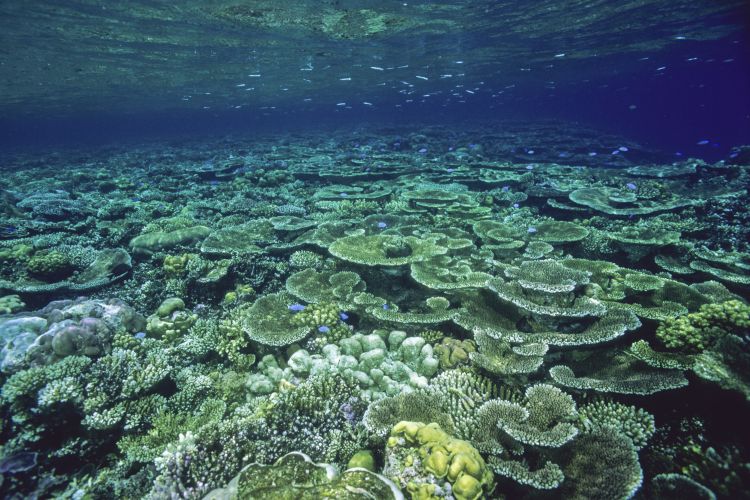
Disrupting the cycle of destruction
Broken and dead coral is a sad by-product of the changes that are occurring in the Great Barrier Reef, but UQ researchers are looking at how they can recycle this damaged coral to help protect the Reef and fast-track its growth.
UQ Civil Engineering and Biological Sciences researchers are working with engineering, science and technology consultancy BMT on a pilot project to investigate the creation of ‘bommies’ – net structures filled with unstable coral rubble.
School of Civil Engineering researcher Professor Tom Baldock hopes to show that strategically placing the two-meter-diameter bommies will fast-track the repair of damaged areas and provide enhanced fish habitats, while also protecting existing exposed corals from further damage.
“Stabilising coral rubble is likely one of the most effective ways of speeding up this process after major disturbances like cyclone damage,” he says.
The work builds on the recent Capturing Coral Reef and Related Ecosystem Services project led by UQ.
Professor Baldock says the team hopes to work with Indigenous communities to find a natural fibre that can be used to hold the coral rubble.
“We want the netting to have no adverse effect on its environment. Working with traditional custodians will help make sure that we protect the existing aquatic environment as well as promote new growth."
The pilot project has been funded by the Australian and Queensland governments and is being run through the Advance Queensland Small Business Innovation Research Coral Abundance Challenge.
Read more about this promising research on UQ News.
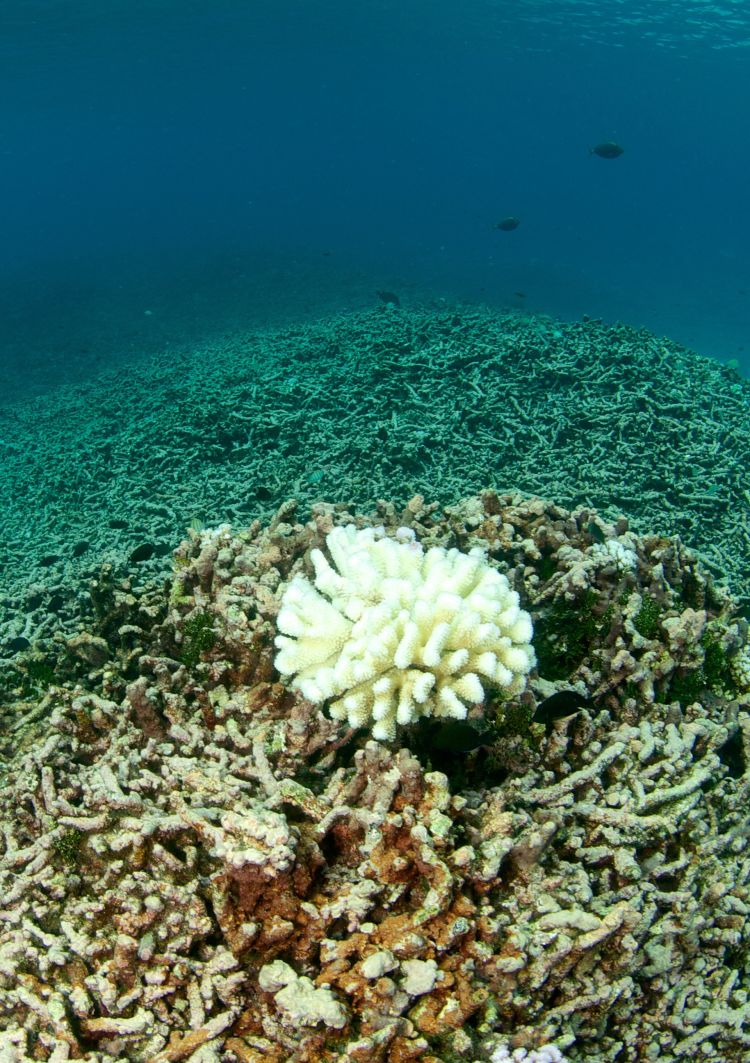
Dead and broken coral: Getty Images/RainervonBrandis
Dead and broken coral: Getty Images/RainervonBrandis
Discover how we create change
From science and sustainability to health and humanities, UQ research has impact.




